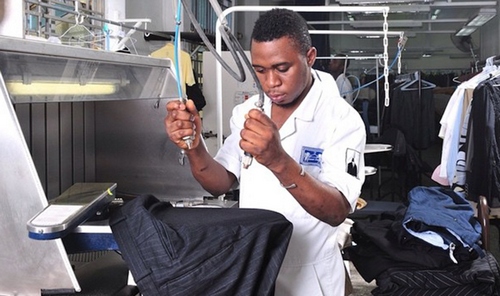Now You Know Major Factors for Serviceability of a Cloth or Garment
Tuesday, 22 January 2019
Edit
Major Factors for Serviceability of a Cloth or Garment
Noor Ahmed Raaz
Specialized in Apparel Manufacturing
Merchandiser
A.M.C.S Textile Ltd (AEPZ)
Email: raju.uttara105@gmail.com
Specialized in Apparel Manufacturing
Merchandiser
A.M.C.S Textile Ltd (AEPZ)
Email: raju.uttara105@gmail.com
Serviceability of Garment:
A garment is considered to be serviceable when it is fit for its particular end use. Besides, a garment cannot be considered ready to wear if it cannot be cleaned. After being used for a certain length of time the garment ceases to be serviceable when it can no longer fill its intended purpose in the way that it did when it was new. There are various factors that reduce the servicing life of a garment are heavily dependent on its end use. Without end using there are also factors of service time of garments. If garments are preserved in damp condition then that garments will not allow for more time use. It will easily tear after using some time. For instance overalls worn to protect clothing at work would be required to withstand a good deal of hard usage during their lifetime but their appearance would not be considered important. However, garments worn purely for their fashionable appearance are not required to be hard wearing but would be speedily discarded if their appearance changed noticeably. An exception to this generalization is found in the case of denim where a worn appearance is deliberately strived for.
 |
| Take care of garments |
There are many factors or reasons for decreasing service time of any garment or cloth.
- Changes in fashion.
- Shrinkage or other dimensional changes of garment which is not allow body fit.
- Changes in the surface appearance of the fabric.
- Fading of the colour of the cloth.
- Failure of the seams of the garment by breaking of the sewing thread or by seam slippage.
- Frayed appearance of particular part of garments.
- Tearing of the fabric through being snagged by a sharp object.
- Abrasion of the fabric by rubbing against parts of the body or external surfaces.
- The cutting action of grit particles which may be ingrained in dirty fabrics and which may cause internal abrasion as the fabric is flexed.
- Tensile stresses and strains which occur as the garment is put on or taken off and when the person wearing it is active.
- The laundering and cleaning processes which are necessary to retain the appearance of the garment.
- Attack by biological agents such as bacteria, fungi and insects. This is a particular problem for natural materials.
- Degradation of the fabric by contact with chemicals which can include normal household items such as bleach, detergents, anti-perspirants and perfumes.
- Light, in particular ultra-violet light, can cause degradation of polymers leading to a reduction in strength as well as causing fading of colours.
- Contact of the garment with sharp objects leading to the formation of tears.